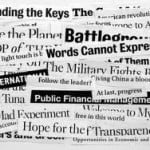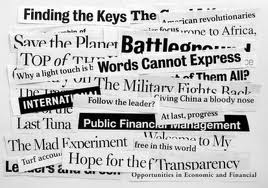
By Jonathan Rosenblum
Jerusalem Post,
Two recent headlines may be more deeply connected than one would think at first glance. The New York Times’ proclaimed two weeks back, “Academic Study Weakens Israeli Claim that Palestinian Schools Teach Hate.” And earlier this week, Ynet reported “Obama Wants Timetable for Pullout from the West Bank.”
The Ynet report claimed that President Obama has demanded from Prime Minister Binyamin Netanyahu a plan for Israeli West Bank withdrawal in order to create a Palestinian state in 2014. While that report cannot be considered authoritative, it is at least consistent with Obama’s approach at the outset of his first term, when he labelled the time particularly auspicious for settling the Palestinian-Israeli conflict once and for all, and appointed former senator George Mitchell to get the job done. Whatever favorable omens the President read in his tea leaves soon turned sour. No substantive negotiations between the Palestinians and Israel have taken place since he entered office.
Perhaps Obama reckons that Israel’s desperation over Iran’s nuclear program provides him with unprecedented leverage over Israel, and is determined to use that leverage to achieve the final settlement agreement that has eluded all his predecessors. It is difficult, however, to imagine how such a final settlement could be achieved. For one thing, any effort to fashion an affirmative response to a presidential demand for a withdrawal plan would bring to an immediate end the romance between Yair Lapid and Naftali Bennett, and throw a spanner into Prime Minister Netanyahu’s efforts to form a government with them in tow.
Nor is it clear why the President would want to focus his energies on Palestinian-Israeli peace, with a dozen or so looming international crises vying for his attention. Arab Spring has undercut once and for all the “realist” case for the centrality of Israel to the instability and failure that characterize the Middle East.
A major American push for Palestinian statehood would be based on the same tired mantra as the Mitchell initiative of 2009: The contours of the final agreement are well known to all the parties. That proposition, I would guess, is not one that commands wide agreement on either the Palestinian or Israeli side.
What is true is that most Israelis would accept pretty much any line drawn on a map — or at least one that preserved Israeli control over the major settlement blocs and the post-1967 neighborhoods of Jerusalem — if they could be confident of living in peace and harmony with their neighbors on the other side forever. But Israelis lack any such confidence.
They see no evidence that the Palestinians are close to eschewing designs on the entirety of Israel, for the simple reason that there has been no education on the Palestinian side for peace in the more than twenty years since Oslo — no acknowledgment, for instance, that peace would require renunciation of the right of return. Yasir Arafat, the most widely revered Palestinian leader, knew what he was talking about when he told President Clinton at Camp David that agreement to Clinton’s proposals –i.e., “the contours of the final agreement long known to all” — would leave him a dead man walking. The Palestinian constituency for peace has not grown larger since Arafat’s demise.
That is why Israel will continue to insist that any peace agreement be based on defensible borders and Israel retaining the ability to prevent the West Bank from becoming a terrorist enclave, like Gaza and southern Lebanon.
THIS IS WHERE the recently published study of Palestinian and Israeli textbooks, supported in part by $500,000 of U.S. State Department funding, comes in. What if everything that Israelis think they know about the education of the present generation of Palestinian children is wrong? What if a fundamental equivalence exists between Palestinian and Israeli textbooks: The textbooks of both sides reflect negative narratives of the other side that have become part of each side’s hard drive. But the Palestinian textbooks are no worse, or at least no worse in kind, if not degree, than Israeli textbooks.
Then what basis does Israel have for its continued suspicions? Israeli textbooks did not prevent the Israeli public from greeting the signing of the Oslo Accords with almost messianic hopes. So why should Palestinian textbooks foretell a refusal of today’s generation of Palestinian children to greet peace with open arms?
The truth, unfortunately, is that the actual study of Palestinian and Israeli textbooks does not support the equivalence trumpeted in the New York Times headlines and elsewhere. And worse, such equivalence as the study’s main authors found is based on a fatally flawed research design.
Dr. Elihu Richter, a professor of Occupational and Environmental Medicine at Hebrew University, was one of the twenty member Scientific Advisory Council to the study. He and other Council members were blind-sided by the decision of the head of the study, Professor Bruce Wexler of Yale University, to publish the study without providing members of the Advisory Council an opportunity to review and critique it in its final form.
Richter details some of the dramatic differences between the Palestinian textbooks and the Israeli ones, even in the study as published. Eighty-four per cent of the excerpts from the Palestinian texts were considered to present negative characterizations of the other side versus 49% in Israeli state texts, and only 1% to contain positive characterizations versus 11% of the Israeli texts. Two-thirds of Palestinian photos put Israelis in a negative light versus only 6% of Israeli photos. Virtually every Palestinian map omitted names of Israeli cities or holy places while only 12% of Israeli maps omitted the names of Muslim sites and holy places.
Palestinian textbooks contain no critical examinations of the actions of Palestinian leaders, such as the Mufti of Jerusalem’s active assistance to Hitler’s genocidal plans, while living in Berlin during World War II. By contrast, Israeli textbooks critically examined Deir Yassin and Sabra and Shatilla.
Professor Daniel Bar-Tal, the lead Israeli author of the study, is a Meretz supporter, who already in 2007 accused Israeli textbooks of adopting a narrative that perpetuates the conflict. He advocates a “holistic” approach, which basically involves the search for false equivalencies on the basis of faulty methodology. Bar-Tal condemned the 2009 Operation Cast Lead as proof that Israelis’ political consciousness has been shaped ” by a sense of victimhood,a siege mentality, belligerence, dehumanization of the Palestinians and indifference to their suffering.” Apparently the desire to stop rocket fire from Gaza had nothing to do with Operation Cast Lead.
Dr. Richter and Amnon Groiss, another member of the Scientific Advisory Board, both noted the omission from the study of many highly negative passages from the Palestinian textbooks on very weak grounds. “Your enemies killed your children, split open your women’s bellies” and another reference to “invading snakes” were omitted because they did not specifically mention Jews or Israel, though it is doubtful many Palestinian children were confused as to the identity of those “invading snakes.”
Other vicious comments made it to the ears of Palestinian children but not to the report on the grounds that they originated in religious texts beyond the study’s purview. Yet strangely the study included textbooks from the charedi sector, which were found to convey negative attitudes towards Christians and Muslims. But the authors failed to distinguish between charedi praise for martyrs as victims in charedi texts and Palestinian praise for suicide bombers as martyrs.
Lumping demonization and dehumanization together with milder forms of delegitimization further distorted the results of the study by downplaying the venom in certain Palestinian passages. Meanwhile the authors scored factually accurate descriptions in Israeli textbooks of the Munich Massacre and the 1941 pogrom against Iraqi Jews as conveying “negative messages” about Palestinians and Arabs.. By that measure, Israeli children should be prevented from learning about the Holocaust lest it cause them to think poorly of Germans.
Amnon Groiss points out a crucial difference in the textbooks themselves. There are many Israeli texts advocating peaceful resolution of the Palestinian-Israeli conflict, and none urging a military resolution. By contrast, there are no Palestinian paeans to peace together with Israelis, and many texts speaking of liberation of the homeland. Israeli texts express sympathy for the plight of the Palestinians and describe individual Palestinians sympathetically. Those passages too have no parallels in the Palestinian literature.
But by far the biggest distortion of the study is the exclusive focus on Palestinian texts removed from the overall educational context shaping the next generation of Palestinians — Palestinian Authority TV and newspapers, paramilitary summer camps for kids, religious sermons denouncing Jews as “sons of pigs and monkeys” and quoting hadiths about how at the end of time even the trees will call out to faithful Muslims to come and slay the Jews hiding behind them.
In particular, the study virtually ignores the cult of martyrdom that has overtaken Palestinian society — the endless scenes on Palestinian TV of the “martyred” Mohammed al-Dura beckoning other youngsters to join him in enjoying the eternal reward reserved for shahids (martyrs); the naming of sports camps and town squares and summer camps for arch-terrrorists, like Dalal Mughrabi, the architect of the Coastal Road Massacre. All available wallspace of Palestinian public areas is filled with pictures of suicide bombers, including the place and date of their martyrdom.
Peace will not come as long as children are subjected to countless messages every day that the highest goal of life is to blow oneself up taking as many Jews as possible. And until those messages cease, we can only hope that Israel will not be submitting plans for the emergence of a Palestinian state.
